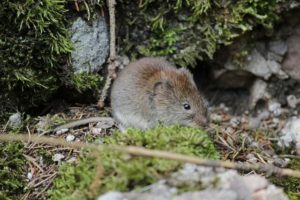Maintain Your Yard: Vole Control Tips for Lush Landscapes
Maintain Your Yard: Vole Control Tips for Lush Landscapes
Blog Article
Unleashing the Power of Vole Parasite Control: Advanced Techniques for Invasion Obliteration and Therapy

Vole Bug Identification and Evaluation
Voles, little rodents that resemble mice yet have much shorter tails, are generally recognized parasites in yards and gardens, requiring extensive assessment to determine the level of their invasion. Recognizing voles involves recognizing their unique attributes, such as their stocky bodies, short legs, and small eyes. They are usually around 3 to 9 inches long and can vary in shade from grey to brown.
Evaluating vole problems is important for executing reliable bug control techniques. Indicators of vole existence consist of paths in grassy locations, damaged greenery, and little burrow openings near the surface. By inspecting these signs, homeowner can determine the intensity of the infestation and develop ideal removal approaches.
To accurately assess vole populations, people can set up bait stations or catches to record and count the rodents. Furthermore, observing vole task patterns can give insights into their numbers and circulation throughout the affected area. By performing a comprehensive evaluation, individuals can customize their parasite control approach to successfully combat vole infestations in gardens and lawns.
Cutting-Edge Trapping Methods
In addition, some digital catches are outfitted with sensors and remote monitoring capacities, enabling property owners to track vole activity and trap condition from a distance, boosting the overall effectiveness of vole insect control efforts. By integrating these innovative capturing techniques into pest management techniques, property owners can take on vole infestations with accuracy and empathy.
Strategic Exclusion Methods
Applying calculated exclusion approaches is vital in stopping vole infestations and protecting yards and yards from damages triggered by these bugs. These barriers need to be buried at the very least 12 inches deep and increase 6 inches over the ground to stop voles from tunneling underneath or climbing up over them.
One more vital exemption technique is the usage of gravel or rock compost instead of organic mulch. Voles are much less likely to passage through rocky terrain, making this a much less appealing setting for them. On a regular basis examining the border of the yard or lawn for voids in structures, wall surfaces, or fences is crucial. These entry points should be secured with products like concrete or steel flashing to stop vole access.
Eco-Friendly Repellents and Deterrents
Utilizing eco friendly repellents and deterrents is a sustainable technique to taking care of vole populaces and minimizing damages to yards and backyards. Green options are gaining popularity as a result of their effectiveness in pushing back voles without creating injury to the setting, pet dogs, or beneficial wildlife. One usual environment-friendly technique is you can check here using natural vole repellents such as castor predator, garlic, or oil urine, which create undesirable aromas for voles, driving them far from treated areas.
An additional green deterrent is using physical obstacles like wire mesh or hardware cloth to secure susceptible plants and bulbs from vole damage (vole control utah). These barriers function as a preventive measure against vole breach while permitting appropriate aeration and water drainage in the dirt
Moreover, introducing vole killers like owls or installing nest boxes can help normally control vole populations in a garden or backyard. By motivating all-natural predators, a balanced ecological community can be kept without the requirement for hazardous chemicals or catches. Generally, including environment-friendly repellents and deterrents in vole insect control strategies advertises ecologically conscious and lasting practices.
Integrated Parasite Monitoring Solutions
An all natural technique to handling vole populations and mitigating damage in yards and lawns includes the thorough method of Integrated Pest Management Solutions. Integrated Bug Management (IPM) integrates various methods to deal with vole invasions successfully while lessening ecological impact. This strategy integrates organic, cultural, physical, and chemical control techniques to attain long-term bug control.
One trick element of IPM is the focus on avoidance. By executing actions such as habitat alteration, image source exclusion strategies, and maintaining proper yard health, house owners can develop atmospheres much less for vole habitation. Furthermore, organic controls, such as presenting all-natural killers or using vole-resistant plant ranges, can assist handle vole populaces without considering chemical treatments.
When chemical control becomes needed, IPM concentrates on utilizing targeted and eco-friendly pesticides in an accurate way. This lowers the general chemical lots on the community while effectively managing vole populations. Regular tracking and analysis are additionally crucial parts of IPM, allowing for adjustments to methods based upon pest populace characteristics and effectiveness of control procedures. By embracing Integrated Insect Monitoring Solutions, homeowners can achieve lasting vole parasite control while advertising environment wellness in their backyards and yards.
Final Thought
In conclusion, the sophisticated strategies for vole pest control gone over in this write-up provide reliable solutions for invasion elimination and therapy. These methods supply an extensive technique to vole parasite control for long-term success.
As the determination of vole invasions continues to challenge property owners and agricultural experts alike, the pursuit for extra reliable and efficient bug control approaches magnifies. Additionally, some digital traps are equipped with sensors and remote monitoring capabilities, enabling house owners to track vole task and catch standing from a range, boosting the total performance More hints of vole parasite control efforts. One common environment-friendly technique is utilizing natural vole repellents such as castor oil, predator, or garlic urine, which create undesirable scents for voles, driving them away from dealt with locations.
In addition, presenting vole predators like owls or installing nest boxes can aid normally control vole populaces in a garden or yard - vole control utah. By taking on Integrated Bug Monitoring Solutions, home owners can attain sustainable vole pest control while advertising ecological community health and wellness in their yards and yards
Report this page